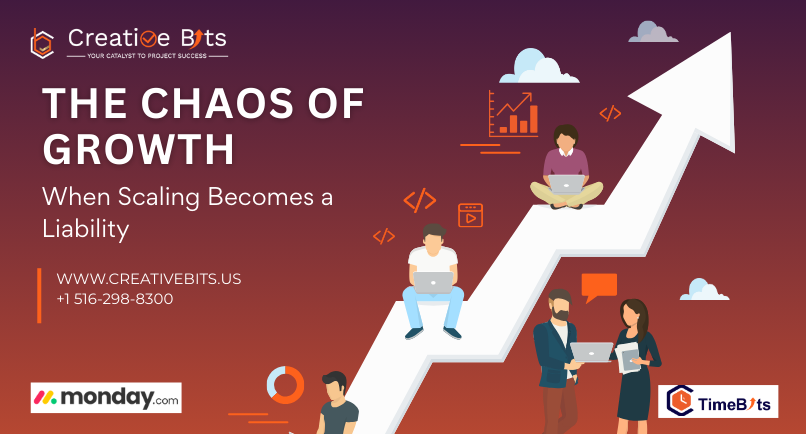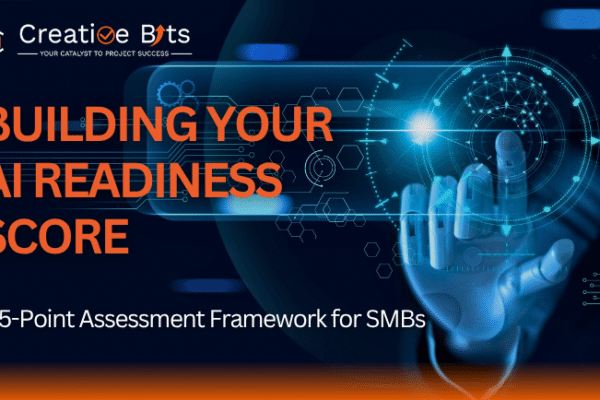Every ambitious business hopes for quick growth. But when growth finally comes, it doesn't arrive calmly—it hits hard, pushes you to your limits, and shows all your weaknesses. Scalable business architecture becomes the foundation that determines whether your company thrives or crumbles under the pressure of expansion.
Systems break down, teams work alone, customer satisfaction drops, and decisions take forever. What you once called "growth" soon turns into a big mess to manage. This is the mess that comes with growth without a proper scalable business architecture in place.
Why Scalable Business Architecture Matters More Than Ever
This challenge doesn't mean you're doing anything wrong. It just means your business structure isn't prepared for the next stage. Scaling isn't about just doing more of what you're already doing—it's about changing how everything works together: people, platforms, data, decisions, and how things get delivered.
According to a recent McKinsey research, companies with robust, scalable business architecture grow 2.5x faster than those with fragmented systems.
That's why we're writing this blog—especially for founders, functional leaders, and operators who are dealing with this complicated phase. If your business feels the pressure of its own growth, you're not alone. You've moved past simple spreadsheets, makeshift tools, and the "get it done somehow" approach.
This article presents a key idea—the Integrated E-commerce Operating System (OS)—and argues for rethinking your scalable business architecture before scaling causes your current setup to fail.
The Chaos of Growth: When Scaling Becomes a Liability
Growth is usually seen as the main sign of a business doing well. Things like quick increases in revenue, offering a wider range of products, opening up new places, and hiring more people are considered clear signs that things are moving forward. But behind these impressive numbers, there's a less talked-about issue: the weakness in how the business is run when it grows too fast without proper scalable business architecture.

a) Data Fragmentation: The Silent Architecture Killer
One of the biggest problems that comes up in this stage is data fragmentation. As companies grow and take on more tasks, customer information gets spread out across different systems—like CRM software, payment processors, logistics tools, and even old spreadsheets.
This lack of a single, reliable source of data weakens the accuracy of the information and makes it really hard to make good decisions. When data is scattered, it causes repeated entries, mixed-up reports, and lost chances to offer personalized experiences.
b) Tool Integration Problems
In companies that are growing quickly, it's common for different departments like sales, marketing, operations, and customer support to pick their own tools without considering how they fit together. This leads to many separate systems that don't talk to each other, creating isolated groups that can't work well together.
According to Salesforce research, 67% of growing businesses struggle with disconnected systems that prevent scalable business architecture implementation.
c) Decision-Making Bottlenecks
Another important issue caused by unchecked growth is the development of slow decision-making. When there's no central system for real-time data access, leaders usually rely on outdated and manually put-together reports.
A 2024 Deloitte survey shows how deep these issues are, with 62% of mid-sized companies saying that weak infrastructure is the biggest roadblock to steady growth.
From Patchwork to Platforms: The Integrated E-commerce OS
The answer to managing chaos when scaling isn't about adding another dashboard or a single fix to an already broken system. Instead, companies need to completely rethink how their scalable business architecture is built.
This is where the idea of an Integrated E-commerce Operating System comes in as a big change. An Integrated E-commerce OS isn't just another tool—it's a company-wide structure that's unified, flexible, and can grow with the business.

Core Components of Scalable Business Architecture
a) Customer Data Platform (CDP)
At the center of this system is the Customer Data Platform (CDP), which brings together behavioral, transactional, and demographic information into one place. Unlike regular CRMs, which usually only store basic contact details, CDPs offer real-time insights into how customers interact.
b) Inventory and Order Management
Managing inventory and orders gets much more complicated as companies grow and operate through different sales channels like physical stores, websites, and online marketplaces. An integrated operating system helps keep inventory information consistent across all these channels.
c) Marketing Automation Layer
The system includes Marketing Automation that uses real-time data instead of looking back at past performance. It can automatically start personalized campaigns based on customer actions like leaving items in their cart or showing interest in a product.
d) Finance and Reconciliation Systems
The Finance and Reconciliation Layer makes the back-end of commerce easier by combining payment processing, returns management, and expense tracking into one system. This helps cut down on mistakes and ensures better compliance.
The True Cost of Not Redesigning Your Architecture
Many leaders in fast-growing companies often delay rethinking their organizational structure, thinking that the money coming in right now can cover the problems caused by messy systems. However, scalable business architecture isn't optional—it's essential for survival.

Hidden Revenue Losses: Problems like running out of stock, not managing inventory well, missing orders, and setting wrong prices lead to losses. These losses don't usually show up clearly in financial reports. Instead, they show up as missed chances.
Customer Churn Acceleration: Today's customers are highly sensitive to bad experiences, especially after they've made a purchase. A 2023 Zendesk report showed that 73% of customers change their brand after just one negative experience following a purchase.
Technical Debt Accumulation: Every extra month of delay makes it harder, more costly, and takes longer to update systems. Experts call this the "interest on deferred maintenance," meaning companies end up paying more in the long run for quick fixes in the short term.
Innovation Slowdown: In companies where systems are all over the place, coming up with a new idea can take weeks or even months to put into action. This slow process not only holds back growth but also makes it harder for the company to adjust and compete.
Start with Discovery: Your Roadmap to Scalable Business Architecture
No company suddenly wakes up and decides to completely overhaul its systems. Change usually doesn't come from a single moment of inspiration; it happens because, over time, people realize that what worked before isn't enough anymore.

a) The Discovery Process
Programs like the Discovery Call provided by TimeBits and Creative Bits become important diagnostic tools. Unlike typical sales approaches that focus on making a quick sale, these one-on-one sessions are more like architectural assessments.
The process includes:
- Current System Assessment: Review of existing systems and challenges
- Quick Win Identification: Changes that can improve things quickly
- Strategic Roadmap: Specific suggestions for the first three OS modules
- Implementation Planning: Low-risk, high-impact transformation steps
b) Implementation Strategy
The key point is that this process isn't about selling software—it's about giving leaders the tools they need to design scalable business architecture that can grow, change, and compete effectively.
Whether a company works in direct-to-consumer (D2C) sales, software-as-a-service (SaaS), retail, or business-to-business (B2B) services, the need is the same: as the company grows faster, its architecture must also evolve.
Conclusion: Building Your Scalable Business Architecture
The main aim is to deal with chaos before it gets out of control. By using smart planning along with rethinking how systems are built, companies can turn their size from something that weakens them into something that makes them stronger.
Scalable business architecture isn't just about technology—it's about creating a foundation that supports sustainable growth, efficient operations, and competitive advantage.
Companies that don't realize this often end up stuck in patterns of poor performance, while those that move quickly become the top players in their field. The Discovery Call isn't just about selling; it's a leadership action that helps businesses not just survive during growth, but actually do better because of it.
Ready to assess your current architecture and build a scalable foundation? Schedule your Discovery Call today and transform your growth from chaos into a competitive advantage.

 monday.com Services
monday.com Services



